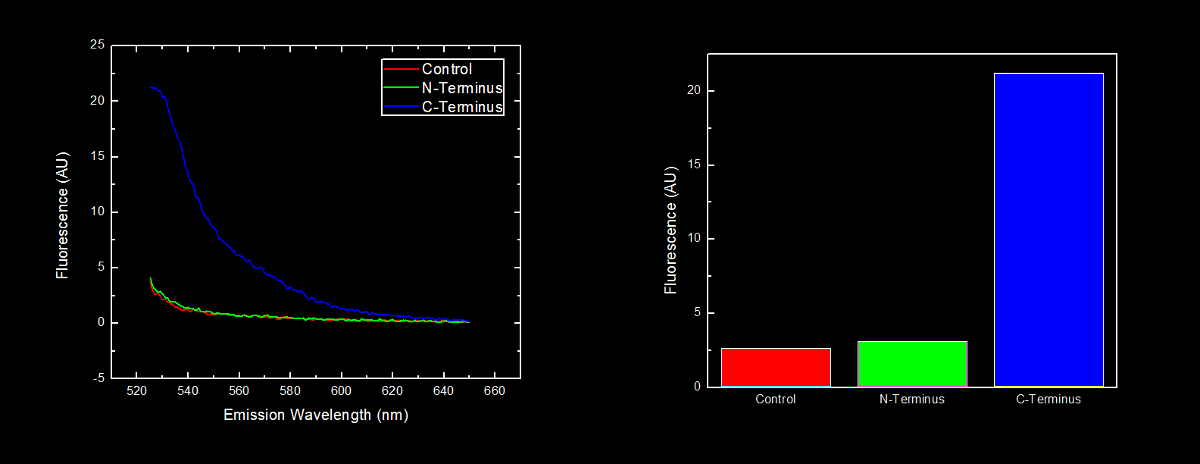Team:Lethbridge/Results
From 2010.igem.org
Liszabruder (Talk | contribs) |
Liszabruder (Talk | contribs) |
||
| Line 132: | Line 132: | ||
==<font color="white">Characterized Parts</font>== | ==<font color="white">Characterized Parts</font>== | ||
| - | <html><a href="http://partsregistry.org/wiki/index.php/Part:BBa_K249004"><font color="green" size="+1"> | + | <html><a href="http://partsregistry.org/wiki/index.php/Part:BBa_K249004"><font color="green" size="+1">BBa_K249004</font></a></html> |
<br><br> | <br><br> | ||
| - | <html><a href="http://partsregistry.org/wiki/index.php/Part:BBa_K249005"><font color="green" size="+1"> | + | <html><a href="http://partsregistry.org/wiki/index.php/Part:BBa_K249005"><font color="green" size="+1">BBa_K249005</font></a></html> |
<br><br> | <br><br> | ||
| - | <html><a href="http://partsregistry.org/wiki/index.php/Part: | + | <html><a href="http://partsregistry.org/wiki/index.php/Part:BBa_K331030"><font color="green" size="+1">BBa_K331030</font></a></html> |
<br><br> | <br><br> | ||
| - | <html><a href="http://partsregistry.org/wiki/index.php/Part: | + | <html><a href="http://partsregistry.org/wiki/index.php/Part:BBa_K331031"><font color="green" size="+1">BBa_K331031</font></a></html> |
<br><br> | <br><br> | ||
| Line 153: | Line 153: | ||
==<font color="white">Method</font>== | ==<font color="white">Method</font>== | ||
| - | In order to further characterize the C-terminal and N-terminal oligoarginine tag (BioBricks < | + | In order to further characterize the C-terminal and N-terminal oligoarginine tag (BioBricks <html><a href="http://partsregistry.org/wiki/index.php/Part:BBa_K249005"><font color="green">BBa_K249005</font></a></html> and <html><a href="http://partsregistry.org/wiki/index.php/Part:BBa_K249004"><font color="green">BBa_K249004</font></a></html> respectively) and investigate the effect their placement on protein stability, yellow fluorescent proteins (YFP) with the oligoarginine fused to either the C-terminus (<partinfo>BBa_K331023</partinfo>) or N-terminus (<partinfo>BBa_K331022</partinfo>) (and preceded by a ribosomal binding site – <partinfo>B0034</partinfo>) were synthesized. We used our Red/White 3-Antibiotic assembly method to add a tetracycline repressible promoter (<partinfo>BBa_R0010</partinfo>) for constitutive expression of the fusion protein. This addition generated BioBricks <html><a href="http://partsregistry.org/wiki/index.php/Part:BBa_K331031"><font color="green">BBa_K331031</font></a></html> and <html><a href="http://partsregistry.org/wiki/index.php/Part:BBa_K331030"><font color="green">BBa_K331030</font></a></html> for the C-terminal tagged and N-terminal tagged YFP respectively. |
<br><br> | <br><br> | ||
The BioBrick containing plasmid was transformed into Escherichia coli DH5α cells. These cells were grown to an OD600 of approximately 0.7, and diluted 1:10 with MilliQ H2O immediately prior to analysis by fluorescent spectroscopy. | The BioBrick containing plasmid was transformed into Escherichia coli DH5α cells. These cells were grown to an OD600 of approximately 0.7, and diluted 1:10 with MilliQ H2O immediately prior to analysis by fluorescent spectroscopy. | ||
 "
"













